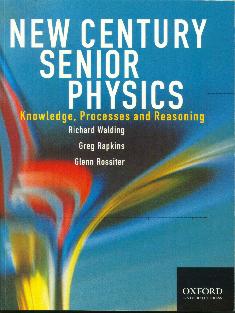
 |
PUZZLE SOLUTIONSfor |

1. Let the officer on the horse be "O"
2. Let the rider at the rear of the column be “R"
3. The velocity of the officer to the ground (vOG) = velocity of officer to rear (vOR) plus velocity of rear with respect to ground (vRG). That is, vOG = vOR + vRG
4. Let time for O to reach head of column be t1. Hence t1 = s1/vOG
5. In this time R has moved a distance s2. Hence t1 = s2/vRG
6. Both are equal to t1, hence: s1/vOG = s2/vRG
7. But s1= 3 + s2 thus (3 + s2)/vOG = s2/vRG
8. Rearranging:(3 + s2)/s2 = vOG/vRG
9 Let the distance O travels from the head of the column to the rear be s3
10. Let the time for O to travel from head of column back to rear = t2 (= s3/vOG)
11. In this time R has moved a distance s4 in a time t2 (= s4/vRG)
12. But s4 = 4 - s2
13. Substituting into equation in line 11: t2 = (4 - s2)/vRG
14. But s4 = 3 - s3 = 4 - s2. Hence s3 = s2 -1.
15. Substituting into line 10: t2 = s3/vOG = (s2 - 1)/vOG
16. Hence t2 = (s2 - 1)/vOG = (4 - s2)/vRG
17. Rearranging: vOG/vRG = (s2 - 1)/(4 - s2), but this equals (3 + s2)/s2 from line 8.
18. Hence (s2 - 1)/(4 - s2) = (3 + s2)/s2
19. Rearranging: (s2 - 1)s2 = (3 + s2)(4 - s2)
20. s22 - s2 = 12 - 3s2 + 4s2 - s22
21. 2s22 - 2s2 -12 = 0
22. Simplify: s22 - s2 - 6 = 0
23. Factorise: (s2 - 3)(s2 + 2) = 0. Hence s2 = 3 (ignore -2)
24. If s2 = 3, then s1 = 6, s3 = 2, s4 = 1
THUS - the officer travels s1 + s3 = 6 + 2 = 8 km
By the way, the velocity of the officer and column can be found:
25. Substituting into equation 7: vRG = vOG/2
26. But vOG = vOR + vRG, hence 2vRG = vOR + vRG, thus vRG = vOR
27. In the total time of t1 + t2, R has traveled 4 km, hence: vRG = 4/(t1+t2)
28. Substituting for t1 (equation 4) and t2 (equation 15): (using actual values of s1 and s3):
vRG = 4 /((6/vOG) + 2/vOG)) = 8/vOG
29. Hence vRG = 8/vOG = vOG/2 (from equation 25)
30. vOG2 = 16, hence vOG = 4, and vRG = 2.
The officer travels at 4 km/h and the column travels at 2 km/h.
The times are t1 = 1.5 hr, t2 = 0.5 hr. Total time 2 hours.
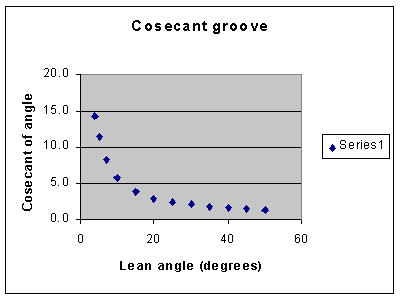


Alternative solution provided by Steve Shellshear (you’ve really got to get out more Steve).
Initial velocity = v
Angle of projection = q
Initial vertical velocity component uv= vsinq
Initial horizontal velocity component vH= vcosq
Travel 5 m (sH) horizontally in time t:
Rearranging vH = sH/t gives sH = vH t = vcosq
Substituting: 5 = vcosq t
Rearranging: t = 5/ vcosq (EQUATION 1)
Travel vertically half maximum height (sv = hmax/2) in time t:
Using sv = uvt + ½at2
hmax/2 = vsinq t + -5t2 (EQN 2)
Substitute Eq 1 into Eq 2:
hmax/2 = vsinq 5/ vcosq + -5(5/ vcosq)2
Multiply both sides by 2:
hmax/2 = 10sinq/cosq + -250/(vcosq)2 (EQN 3)
Determine hmax using vv2 = uv2 + 2as
0 = (vsinq)2 – 20 hmax
Rearranging:
20hmax = (vsinq)2
Divide both sides by 20:
hmax = (vsinq)2/20 (EQN 4)
Substitute EQN 4 into EQN 3:
(vsinq)2/20 = 10sinq/cosq + -250/(vcosq)2
Multiply both sides by 20 (vcosq)2
(vsinq)2(vcosq)2 = 200sinq (vcosq)2/cosq – 250 x 20
v4 (sinqcosq)2 = 200sinqcosq v2 - 5000
Prepare for identity conversion of 2 sinqcosq = sin2q
v4 (2sinqcosq)2/4 = 100 x 2sinqcosq v2 - 5000
Convert and multiply both sides by 4:
v4 (sin2q)2 = 400 v2 sin 2q - 20000
Subtract 400v2sin2q from, and add 20000 to both sides:
v4 (sin2q)2 – 400v2sin2q + 20000 = 0 (Equation 5)
Calculate the range using time t
Vertically, using sv = uvt + ½at2
0 = vsinq t – 5t2
Add 5t2 and subtract vsinqt from both sides:
5t2 - vsinqt = 0
Divide both sides by 5:
t2 - vsinqt/5 = 0
Factorise:
T(t-vsinq/5) = 0
Therefore, t = o t = vsinq/5
We are interested in t = vsinq/5 (EQN 6)
Horizontal range, R:
R = vcosqt (EQN 7)
R = vcosq vsinq/5
Convert to sin 2q
R = v2 (2sinq cosq)/10
R = v2 sin2q/10 (EQN 8)
Substitute EQN 8 into EQN 5
100R2 – 4000R + 20000 = 0
Divide both sides by 100
R2 – 40R + 200 = 0
Using quadratic formula:
R = (40 ± Ö(402 – 4 x 1 x 200)/(2 x 1)
R = (40
± 28.284)/2
R =
34.14m or 5.86m
Thanks Steve.



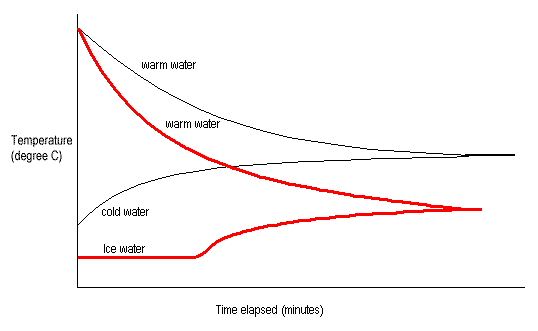
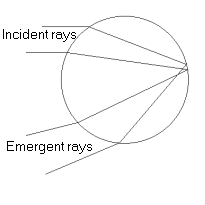
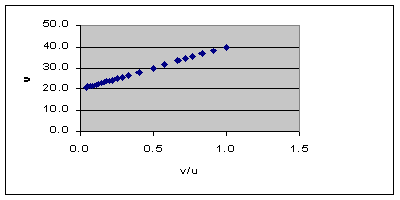
 Return to Physics Textbook Website Home Page
Return to Physics Textbook Website Home Page